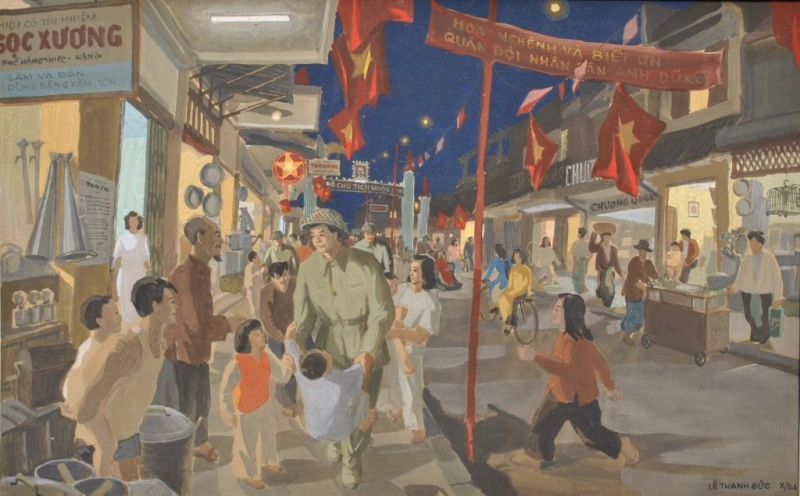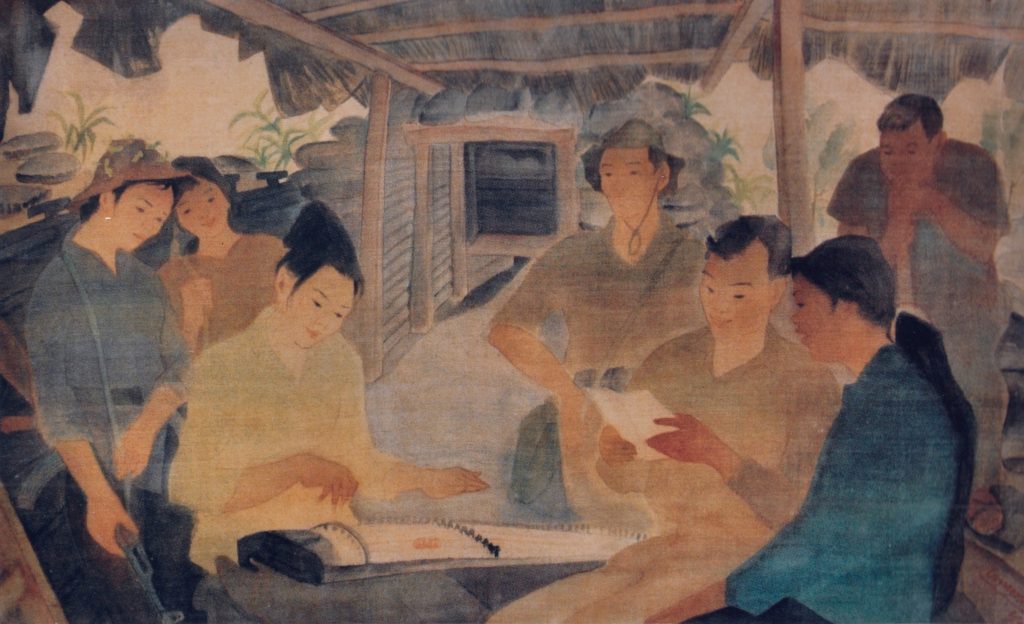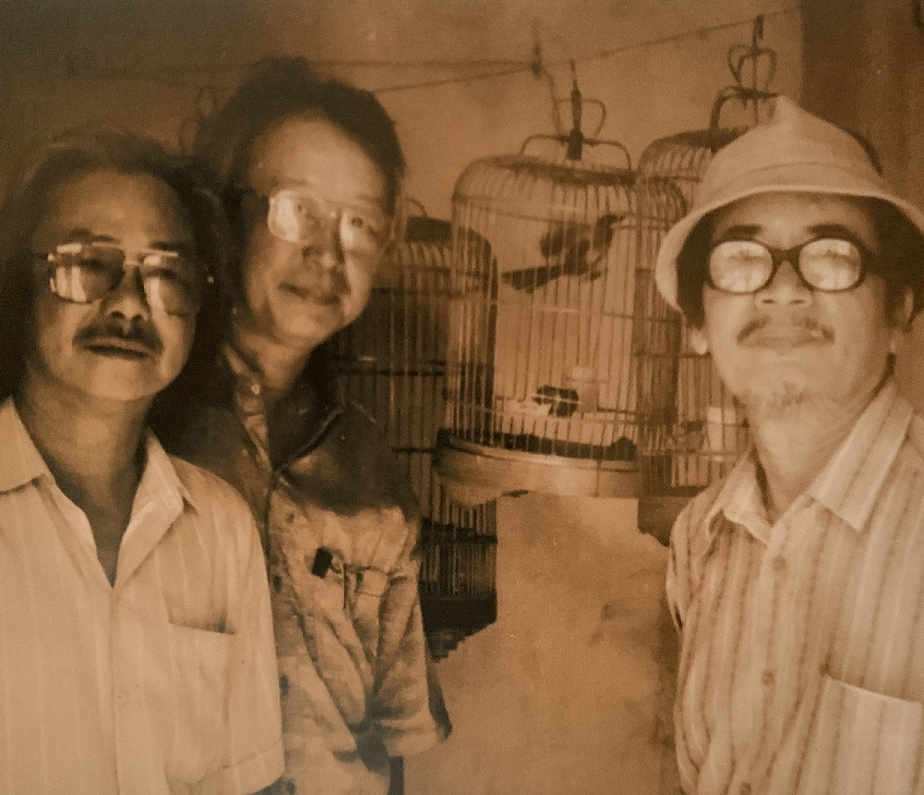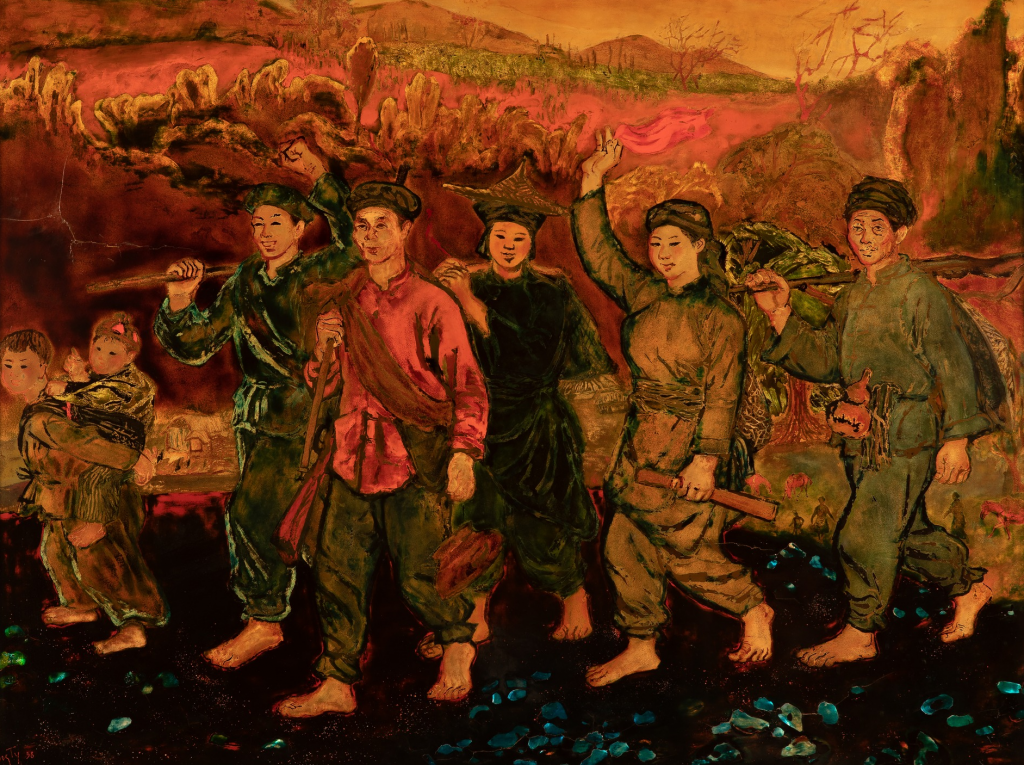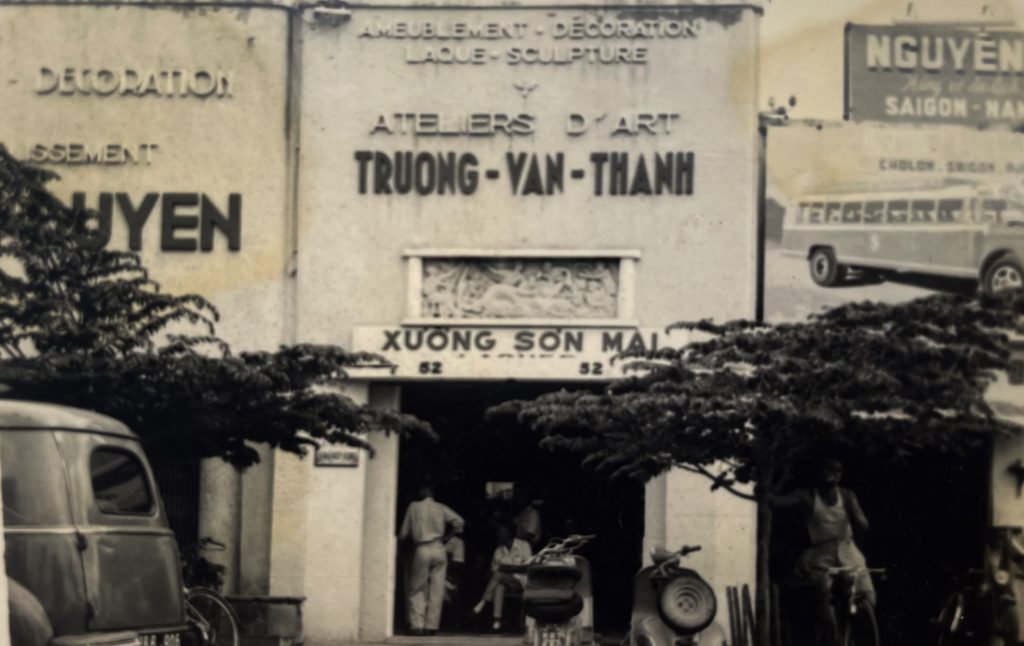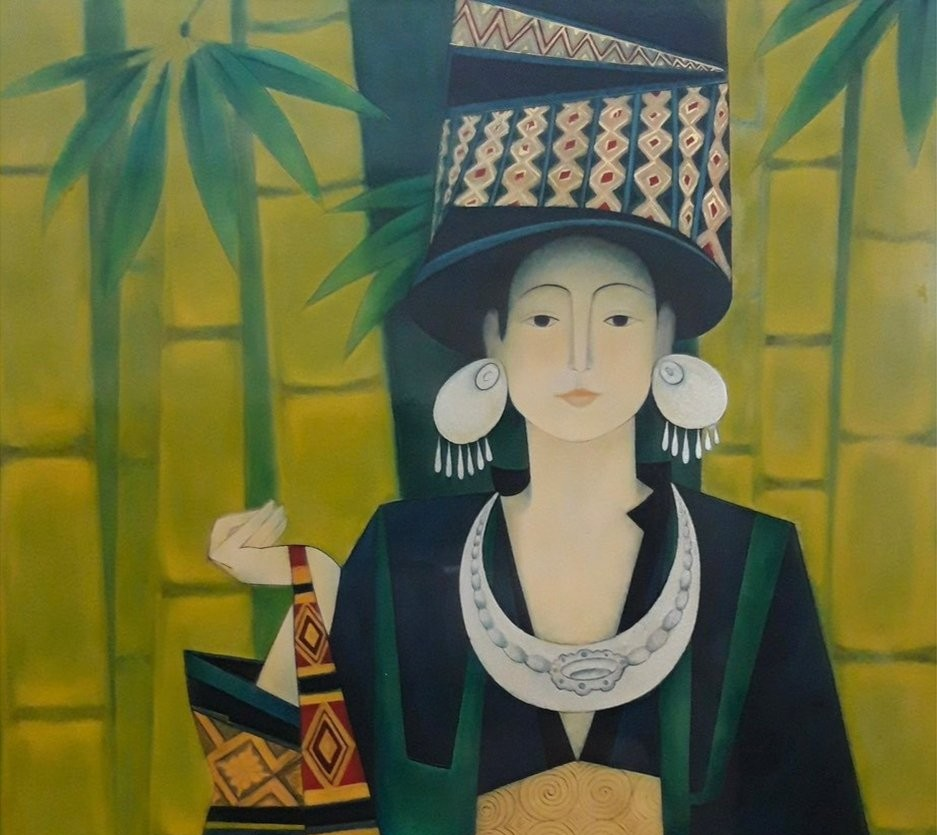The Temple Club was opened in 2000 and has quickly established itself as one of downtown Ho Chi Minh City’s most stylish bars and restaurants, in Ton That Thiep Street, an area that is a rapidly developing with new shops, restaurants and apartments.
What makes the Temple Club so different from others is that it has attempted to create something akin to the city’s heritage. In 1880, the Chetty Community, East Indian traders and money–lenders who began to settle in Saigon towards the end of the nine-teenth century — built themselves a Hindu place of worship, the Mariamman Temple. Directly opposite, they built a large three-story building as a dormitory and refectory to welcome pilgrims.
The owners of the Temple Club, Luc Lejeune, Stella So and Lee Baker, were determined to secure the second floor of this build-ing as soon as they saw it, although it took some years. The trio had a very clear idea of what they wanted to do with it, which was their own interpretation of the Indochine theme with all its nostal-gia for playful Art Deco functionality and seductive decoration. It had to be a comfortable and stylish location to meet friends and clients. All the furniture and fixtures were sourced by the owners, pieces were commissioned, and local markets were scoured. The building was gutted, the red bricks were left exposed, and new floors were added. All the rooms were personally arranged by the owners until they were satisfied that the decor looked authentic but not old.
The well-disguised entrance is reached along a lantern-filled passageway which leads to an elegant doorway opening up to the entrance hall, which typifies the mood of the whole club — a felicitous mix of contemporary and Indochine style that reflects a romantic yearning for those glamorous days of the Art Deco period. The hall leads to the splendid long bar, carefully created using mainly reclaimed wood from old houses. Small private dining rooms at the front lead to the main dining area and into the Club room, which is laid out with all the intimacy of a private home.
This philosophy has contributed well to the sense of comfort and style of the place. Every item is a vintage design collected by the owners, and many of these original pieces have been repro-duced for clients. This is where guests feel genuinely at home, sitting back in oversized sofas and deep leather Art Deco-style armchairs, all designed to individual specifications.
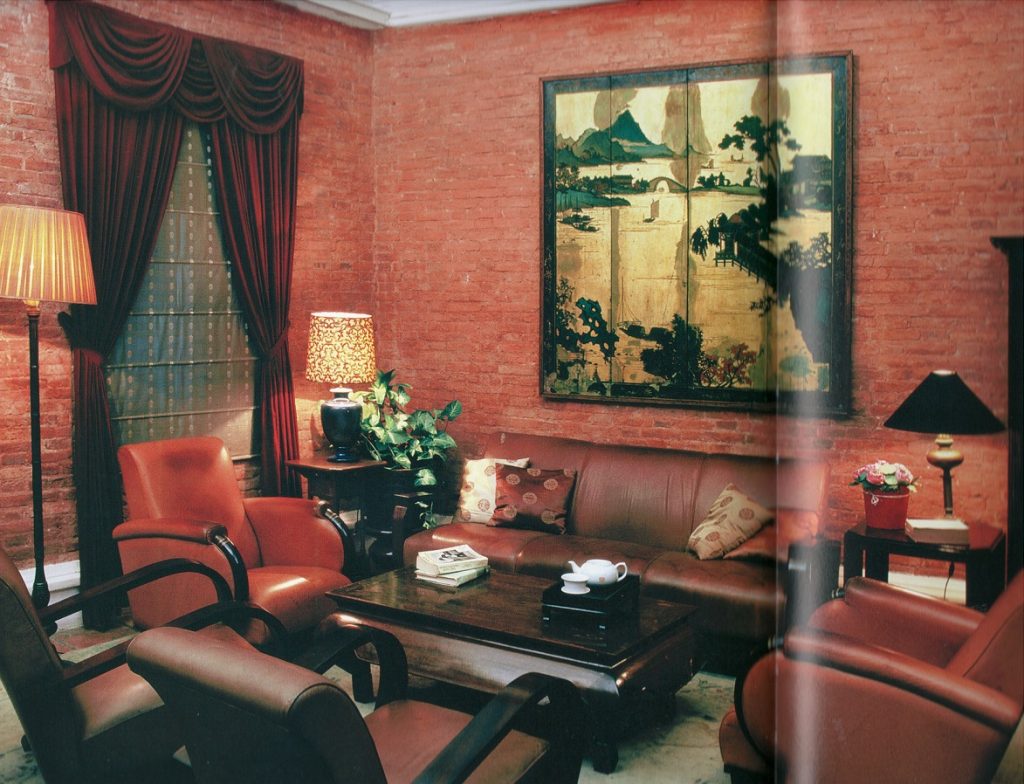
The Art Deco-styled sofas and chairs in the Temple Club are based on 1930s designs and were created to Temple Design’s specifications. The custom-made light-ing, an important aspect of the club’s interior, was inspired by old lamps found in antique markets. The paneled lacquer painting on the wall possibly came from India via the East India Company. Scattered throughout the art-filled rooms is an eclectic mix of artifacts, including books and small bronze incense burners used as ash trays, all salvaged from various places.
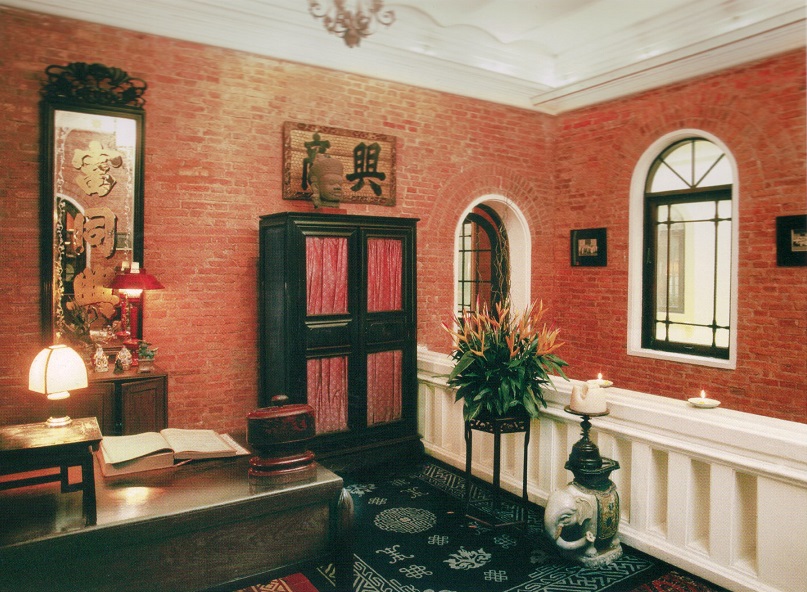
The staircase in the reception hall was moved to create a large reception area. The Art Deco chandelier, imported from Hong Kong sometime during the 1950s, was sourced in Hanoi. A Khmer head sits on top of an old Chinese cupboard. Behind it, on the wall, hangs a Chinese shophouse mirror advertising its business.
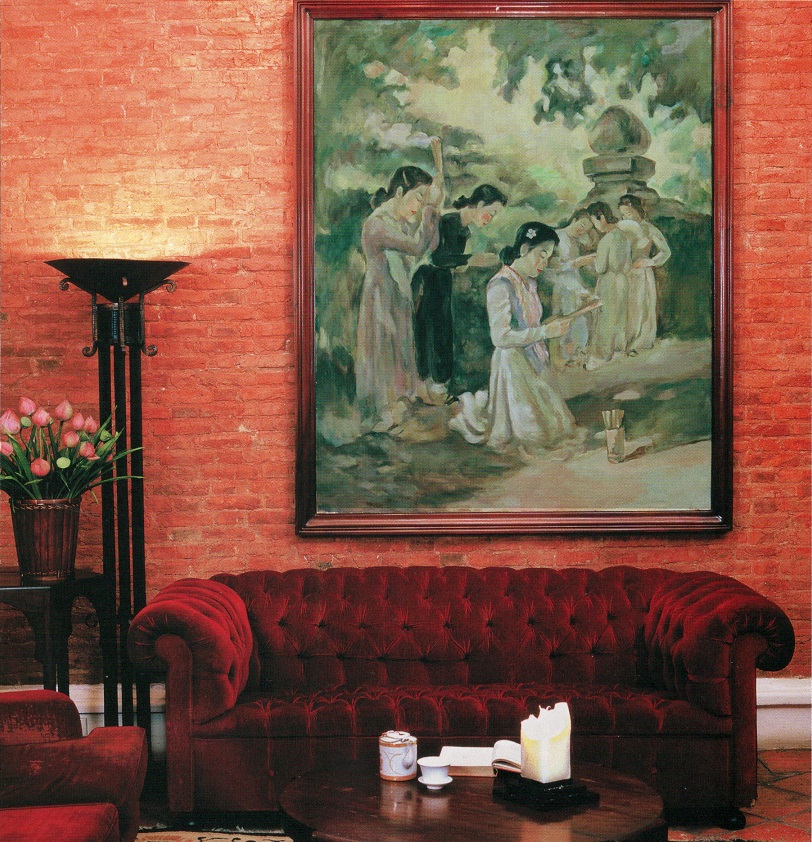
This unsigned painting, dated 1942, is believed to have origina-ted in the Ecole des Beaux Arts d’Indochine. It depicts a fortune-telling scene with a girl praying in front of a pagoda. The Temple Club is full of furniture which has been reproduced by Temple Designs, including this stunning deep red Chesterfield sofa, to produce a look of studied comfort and elegance.

The small private room at the front of the restaurant was originally an open-sided terrace looking down onto the noisy street. The traditional handmade encaustic red and green tiles on the floor were reclaimed from an old French villa. The dining furni-ture was all made by Temple Designs. Most of the pieces in the club are reproductions of antique pieces that Luc has collected over the years.

In order to break the monotony of the exposed bricks, large wooden screens which are back lit and hung with silk, hang on the wall. Ceramic wall lights, similar to Dutch colonial lamps, provide additional lighting. All the tables and chairs in the restaurant were custom-made by Temple Design.
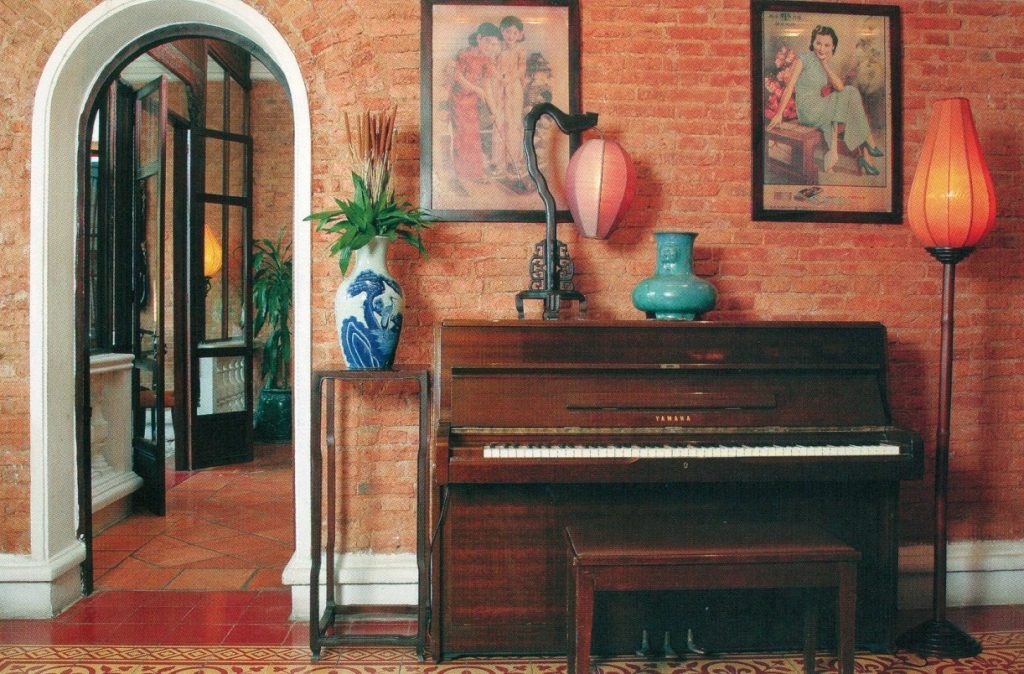
Above the piano hang two Chinese advertising posters bought in Shanghai. The unusual lamp on the piano was designed by Temple Design. Through the doorway on the left is a view of the private room, which is separated from the main dining room by reclaimed wood-framed glass doors.
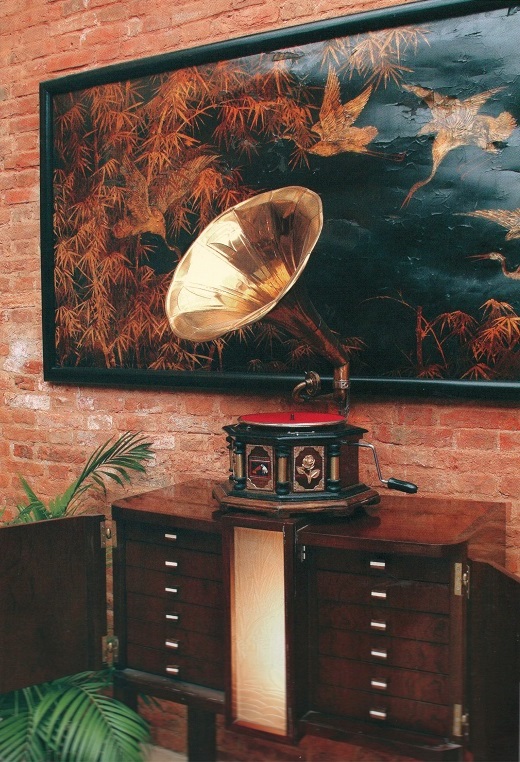
The lacquer painting, rescued from a dustbin, hangs over a beautifully crafted wooden cigar cabinet, a contemporary piece made by the French designer Jacques Blanchard, who lives in Ho Chi Minh City. The 193os wind-up gramophone is by Pathe Marconi, the French company that eventually became EMI.
Source: The book ‘Vietnam Style’ — photographs by Luca Invernizzi Tettoni, text by Bertrand de Hartingh and Anna Craven-Smith-Milnes


